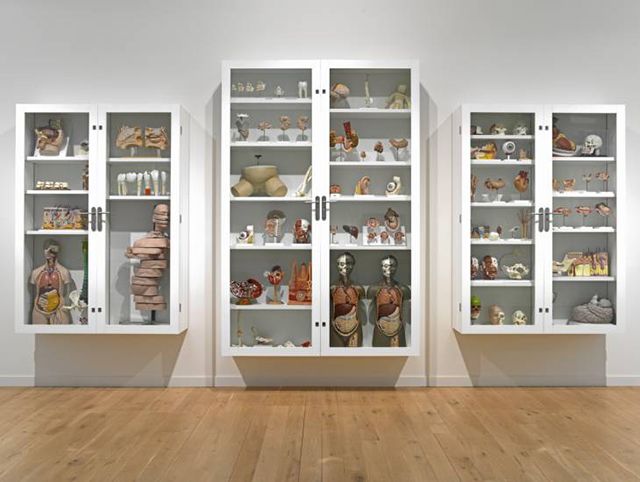 |
| Trinity – Pharmacology, Physiology, Pathology, 2000 |
 |
| Damien Hirst, In and Out of Love (White Paintings and Live Butterflies) – installation view, 1991 |
Sources:
Dannatt, Adrian. "Damien Hirst : Life's like This Then It
Stops." Flash Art 169 (1993): 59-63. Print.
In an interview with Adrian Dannatt for Flash Art magazine, Damien Hirst
discusses the motivation behind the majority of his work and his attitude
towards death, life and his intentions behind particular design points. His
states his sensationalism as not for the sake of shocking the public, but to
bring viewers closer to the consideration of death and it’s inevitability. He
speaks of a lack of death in life and the living and the pain of being alone
while living as greater than death itself, yet notes the aversion of the masses
to reminders of death and dying. His pieces involve elements that symbolize a
flow of ideas into and out of his exhibitions—particularly his use of glass and
cut slits in the transparent panels of pharmacy displays. He states that art is
not life, but a way of communicating ideas about life through metaphors.
Hirst, Damien.
"Damien Hirst at Tate Modern." Tate Etc. 24 (2012):
29. Print.
Damien Hirst, in this article published in Tate etc., discusses the influences
behind his piece, “For the Love of God,” shown in a recent exhibit at the Tate
Modern. He states his interest in the topic of death and his method of
confronting death through his work. “For the Love of God,” Hirst says, was influenced
by the Mexican tradition of embracing death and the celebration of the Day of
the Dead. He was inspired by such commonly seen decorated skulls to create his
own version—a diamond encrusted skull—as a way of coming to terms with the
morbidity of death’s concept. Hirst’s explanation for his piece follows a
common theme in which many of his works provoke thoughts of the nearness of
death to life.

No comments:
Post a Comment